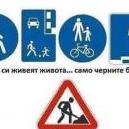Ивайло Славов: Изпих 280 хапчета, хомеопатията е само захар и вода
-
Подкрепете ни
-
Теми
-
- 2702 мнения
- 156721 views
-
- 52 мнения
- 2430 views
-
Руско-украинската война 2022-2024 година. 1 2 3 4 134
От Р. Теодосиев, in Руско-украинската война 2022 година.
- 3342 мнения
- 161052 views
-
- 131 мнения
- 10705 views
-
- 4782 мнения
- 209771 views
-
-
Последно разглеждащи 0 Потребители
- No registered users viewing this page.





Recommended Posts
Напиши мнение
Може да публикувате сега и да се регистрирате по-късно. Ако вече имате акаунт, влезте от ТУК , за да публикувате.